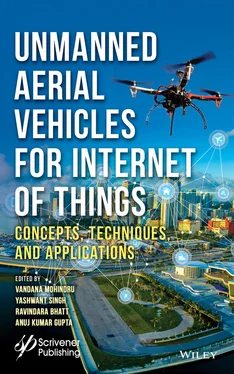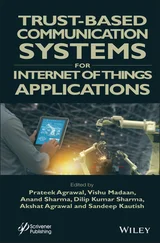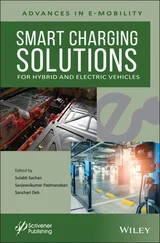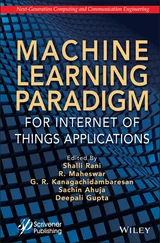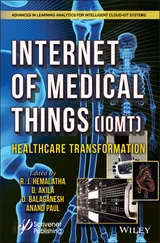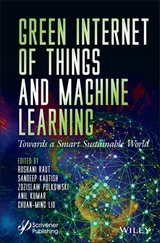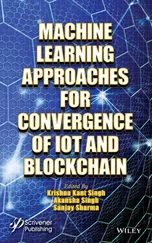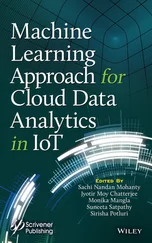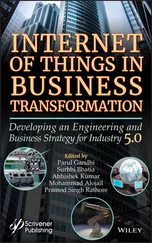Library of Congress Cataloging-in-Publication Data
ISBN 978-1-119-76882-1
Cover image: Pixabay.Com
Cover design by Russell Richardson
Set in size of 11pt and Minion Pro by Manila Typesetting Company, Makati, Philippines
Printed in the USA
10 9 8 7 6 5 4 3 2 1
Unmanned aerial vehicles (UAVs) have become one of the rapidly growing areas of technology, with widespread applications covering various domains. UAVs play a very important role in delivering Internet of Things (IoT) services in small and low-power devices such as sensors, cameras, GPS receivers, etc. These devices are energy-constrained and are unable to communicate over long distances. The UAVs work dynamically for IoT applications in which they collect data and transmit it to other devices that are out of the communication range. Furthermore, the benefits of the UAV include deployment at remote locations, the ability to carry flexible payloads, reprogrammability during tasks, and the ability to sense for anything from anywhere. Using IoT technologies, a UAV may be observed as a terminal device connected in the ubiquitous network, where many other UAVs are communicating, navigating, controlling, and surveilling in real time and beyond line-of-sight.
However, many significant research challenges should be addressed before bringing such UAV capabilities into practice. The aim of this book is to explore the theoretical as well as technical research outcomes of all aspects of UAVs. The UAV has drastically altered the perspectives of users, practitioners, and researchers in many fields of application such as disaster management, structural inspection, goods delivery, transportation, localization, mapping, pollution and radiation monitoring, search and rescue, farming, etc. The advancements introduced by UAVs are countless and have led the way for the full integration of UAVs as intelligent objects in the IoT.
This book helps to realize the full potential of the UAV for the IoT by addressing its numerous concepts, issues and challenges, and develops conceptual and technological solutions for handling them. It is comprised of 15 chapters authored by various renowned experts in the UAV and IoT fields. The book is organized as follows:
Chapter 1presents a comprehensive survey of UAVs. The communication standards, workings, and various technologies of UAV are presented.
Also, platforms of different types of drones in various categories, their working, types, sizes, and other technology employed in making them are explored. Furthermore, the latest ongoing technology used in drones and their recent advancements are discussed.
Chapter 2highlights the state-of-the-art, challenges encountered and the open research issues in designing UAV-aided wireless communication networks. A few of the challenges identified and presented include the best methods of 3D deployment of drones, allocation of resources, optimization of the flight time and trajectory of UAVs, handover management, channel modeling of highly dynamic UAV channels in various scenarios of UAV-assisted networks, interference management, effects of higher Doppler shifts in mmWave networks, on-board energy availability of UAV devices, etc.
Chapter 3focuses on the techniques available for effective battery and energy management in UAV-based communication networks. The mechanisms for the optimal utilization of energy resources by UAVs to maximize their lifespan or deployment in a network are critically examined. This helps to significantly reduce the usage of network energy that results in a prolonged network lifetime. Furthermore, potentially promising areas for future research in energy management are also explored.
Chapter 4emphasizes the most used communication techniques in UAVs. The state-of-the-art literature regarding UAV communication techniques and a summary of the same in the form of challenges and issues that arise when developing communication methods for UAVs are presented. A comprehensive performance comparison of UAV communication techniques is provided at the end of this chapter.
Chapter 5discusses different challenges and threats posed by UAVs such as hijacking, privacy, cybersecurity, and physical safety. Also discussed are different solutions for avoiding these issues with current technologies.
Chapter 6bridges the landscape between the IoT and the UAV by identifying the technical and nontechnical issues facing integration. Also presented are various applications, architecture, and technologies of the UAV-enabled IoT. This chapter answers the question regarding the proximity between IoT and UAV by exploiting the mobility of UAVs.
Chapter 7introduces the practice of using UAVs for security and intelligence and also relates how drones are employed in different domains and for different purposes, including mischievous ones. Also, new experiments are presented related to security, safety, and privacy concerns when UAV drones are engaged in dangerous activities.
Chapter 8explores blockchain-based solutions for various security issues in UAV-enabled IoT. Though the fusion of UAVs and IoT proves disruptive, it is needed to address increased security issues. Identity management, authentication, UAV hijacking, secured and trustworthy data sharing in intra-UAV communications, and UAV signal jamming are explored in this chapter. Since blockchain is a decentralized technology, a distributed ledger offers solutions to some of these UAV issues presented here.
Chapter 9introduces the efficient energy management systems in UAV-based IoT networks. The major constraint envisaged is the limited battery capacity of UAVs, proving them to be energy-constrained devices. The methods described here either harvest energy from RF signals or mmWaves, charge wirelessly from the charging station, or change the flight conditions for efficient energy utilization.
Chapter 10contains an inclusive survey on the challenges and opportunities of IoE-enabled UAVs. There is a review of technologies enabling these opportunities, such as battery constraint, security issues, computing, and coverage constraints; and there is also an overview of UAVs. Finally, IoE-enabled UAV technology is presented that uses UAV deployment and mobility with IoE’s intelligence, scalability, and diversity.
Chapter 11provides a comprehensive survey of research for exploring applications of AI in UAV-enabled IoT systems with a specific focus on the research being conducted in the field of convergence of three disruptive technologies—namely, AI, UAVs, and the IoT—for improving the quality of life. The importance of AI in realizing an autonomous and intelligent flying IoT is emphasized.
Chapter 12aims to follow a modular design approach to provide better functionality and a wide range of applications in all sorts of fields. It also incorporates the IoT in the UAV with all the sensor data of the surrounding environment with a UAV position that can be transmitted to a remote server and analyzed in real time.
Chapter 13focuses on a mind-controlled UAV using brain-computer interface (BCI), which is a connection between the human brain and computers. The scope of this chapter is concentrated on the development boards which permit wireless communications.
Chapter 14analyzes the new era farming system and the role of UAV technologies which help to improve the agricultural area to enable farmers to make cost-effective decisions while also preserving the ecosystem and changing how food is generated.
Chapter 15explores the IoT-based UAV platform revolutionizing smart healthcare. The mobile phone industry and the IoT networks that are making robust data collection possible are rapidly being used in medical tools and software. This chapter discusses healthcare IoT technologies and their advantages for society.
Читать дальше
